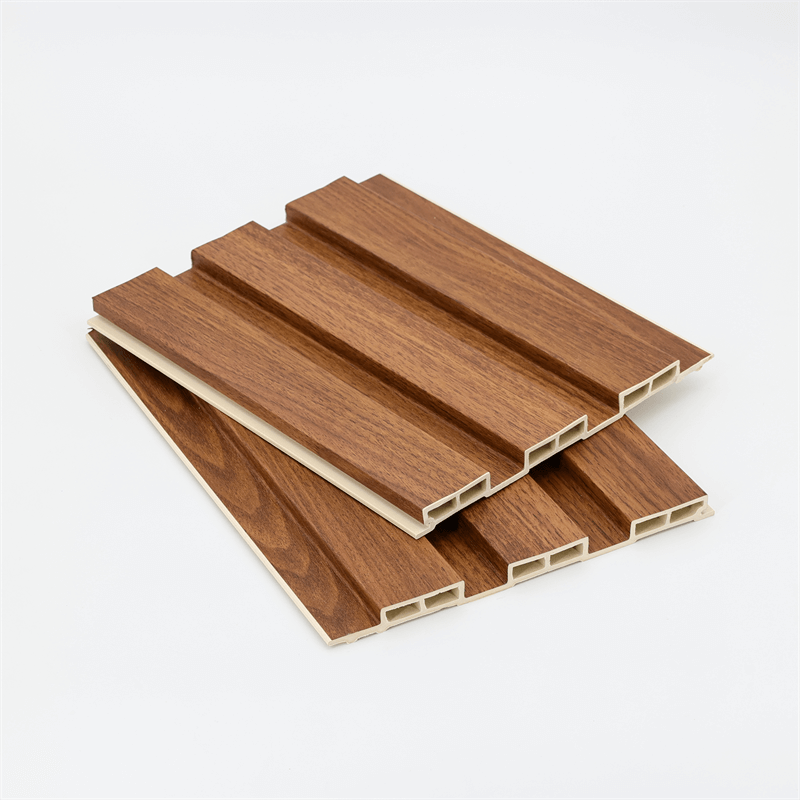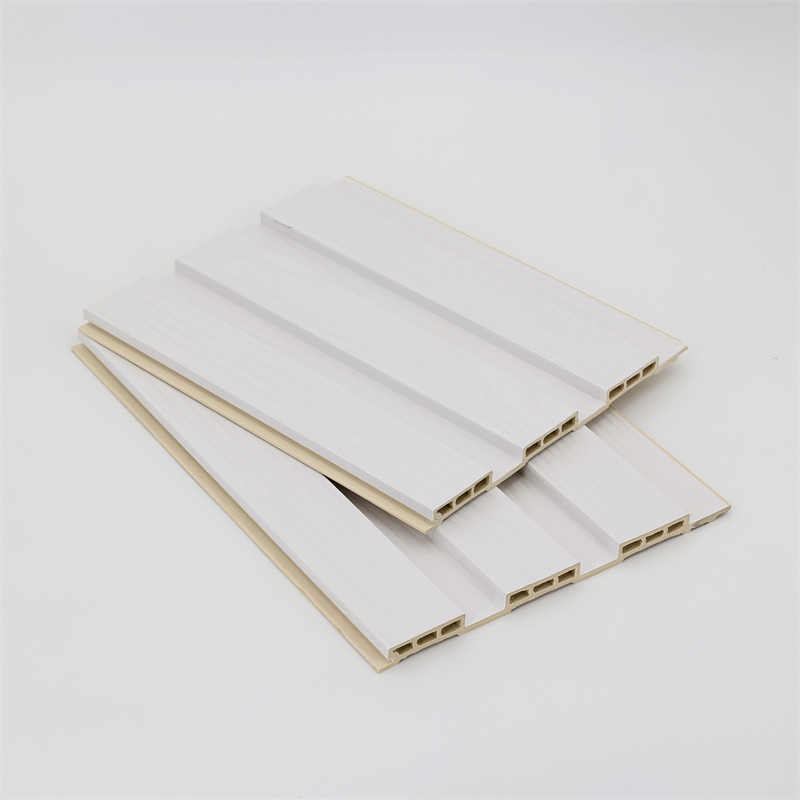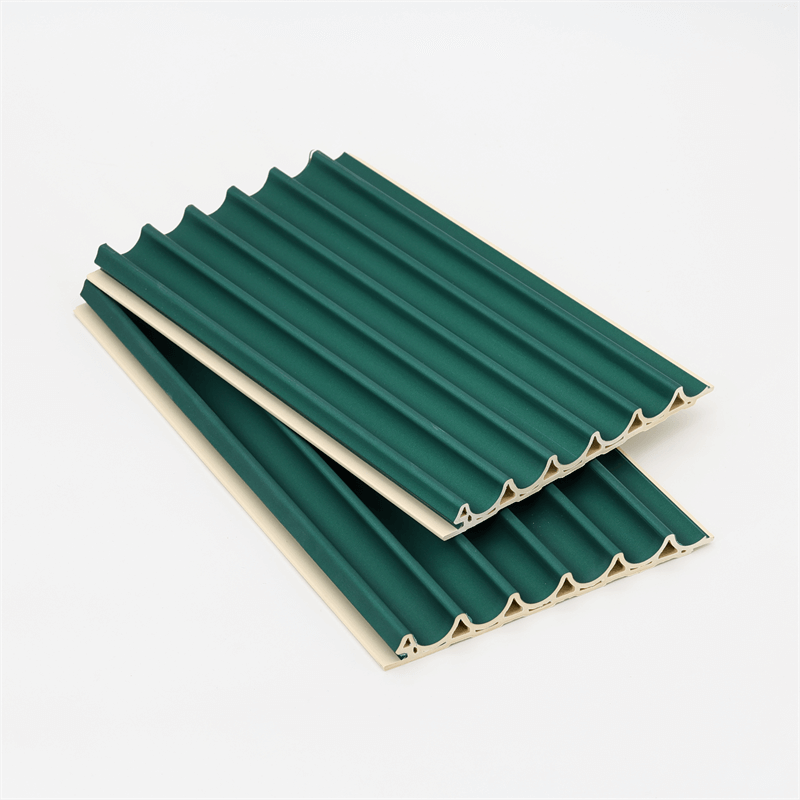In today’s world, the importance of sustainable and eco-friendly materials in construction cannot be overstated.
Wood-Plastic Composite (WPC) wall panels have gained significant attention as an environmentally friendly alternative to traditional building materials.
This essay delves into the environmental benefits of WPC wall panels, focusing on their use of recycled materials, reduced carbon footprint, contribution to waste reduction, and impact on indoor air quality.
I. Use of Recycled Materials: Promoting Resource Conservation
- Utilization of Post-Consumer Waste: WPC wall panels are manufactured using a combination of wood fibers and plastic polymers, with a significant portion derived from post-consumer waste. By incorporating recycled materials, these panels help reduce the consumption of virgin resources and divert waste from landfills. This practice promotes resource conservation and minimizes the environmental impact associated with the extraction and processing of raw materials.
- Sustainable Sourcing: The wood fibers used in WPC panels often come from responsibly managed forests or from reclaimed wood sources. This sustainable sourcing ensures that the production of WPC wall panels does not contribute to deforestation or habitat destruction. By using wood materials obtained through sustainable practices, WPC panels support the preservation of natural ecosystems.
II. Reduced Carbon Footprint: Lowering Environmental Impact
- Energy Efficiency in Production: The manufacturing process of WPC wall panels requires less energy compared to traditional materials like concrete or steel. The use of recycled materials and efficient production techniques contributes to a reduced carbon footprint. By lowering energy consumption during manufacturing, WPC panels help mitigate greenhouse gas emissions and combat climate change.
- Decreased Transportation Emissions: WPC panels can be produced locally or regionally, reducing the need for long-distance transportation. This localized production helps minimize carbon emissions associated with transportation and supports regional economies. By choosing WPC wall panels, builders can contribute to the reduction of greenhouse gas emissions in the construction industry.
III. Waste Reduction: Minimizing Environmental Burden
- Diversion of Plastic Waste: WPC wall panels provide a valuable solution for diverting plastic waste from landfills. By incorporating plastic polymers into the panels, WPC technology repurposes materials that would otherwise take centuries to decompose. This waste reduction strategy helps address the global plastic waste problem and reduces the burden on landfill capacities.
- Long Lifespan and Recyclability: WPC wall panels have a long lifespan, requiring minimal maintenance and replacement. Unlike traditional materials that may deteriorate or become obsolete over time, WPC panels can be recycled at the end of their life cycle. Recycling WPC materials further reduces waste and supports a circular economy, where resources are reused rather than discarded.
IV. Improved Indoor Air Quality: Healthier Living Spaces
- Low Emission of Volatile Organic Compounds (VOCs): VOCs are chemicals that can be released from building materials and negatively impact indoor air quality. WPC wall panels have low VOC emissions, creating healthier indoor environments for occupants. By choosing WPC panels, homeowners and builders can contribute to better indoor air quality and promote the well-being of occupants.
- Resistance to Mold and Mildew: Moisture can lead to the growth of mold and mildew, which not only affects the structural integrity of a building but also poses health risks. WPC panels are resistant to moisture, inhibiting the growth of mold and mildew. This resistance helps maintain a clean and healthy living environment and reduces the need for potentially harmful chemical treatments.
WPC wall panels offer several environmental benefits that make them a sustainable choice for construction projects.
Their use of recycled materials, reduced carbon footprint, contribution to waste reduction, and positive impact on indoor air quality demonstrate their commitment to eco-conscious building practices.
By incorporating WPC panels, builders and homeowners can contribute to resource conservation, mitigate greenhouse gas emissions, minimize waste, and promote healthier living spaces.
The environmental advantages of WPC wall panels align with the global movement towards sustainability, providing a viable and eco-friendly solution for the construction industry.

In conclusion, the environmental benefits of WPC wall panels are significant and cannot be ignored in today’s construction industry.
Their use of recycled materials promotes resource conservation and reduces the demand for virgin resources.
By utilizing post-consumer waste and sustainably sourced wood fibers, WPC panels help preserve natural ecosystems and contribute to a circular economy.
The reduced carbon footprint of WPC wall panels, achieved through energy-efficient production and localized sourcing, helps combat climate change by lowering greenhouse gas emissions.
Additionally, the diversion of plastic waste from landfills and the long lifespan of WPC panels contribute to waste reduction efforts and support a more sustainable approach to construction.
Furthermore, WPC wall panels have a positive impact on indoor air quality by emitting low levels of volatile organic compounds and resisting the growth of mold and mildew.
This promotes healthier living environments for occupants, ensuring their well-being and comfort.
By embracing the environmental benefits of WPC wall panels, builders, architects, and homeowners can make a positive difference in the construction industry.
The use of sustainable materials, such as WPC panels, helps address pressing environmental concerns and contributes to a greener future.
As the demand for eco-friendly construction practices continues to grow, WPC wall panels serve as a prime example of how innovation can lead to sustainable and responsible building solutions.
Incorporating WPC wall panels into construction projects not only benefits the environment but also provides aesthetic appeal, durability, and cost-effectiveness.
By choosing WPC panels, individuals can demonstrate their commitment to sustainable living, reduce their ecological footprint, and contribute to a more sustainable and resilient built environment.


